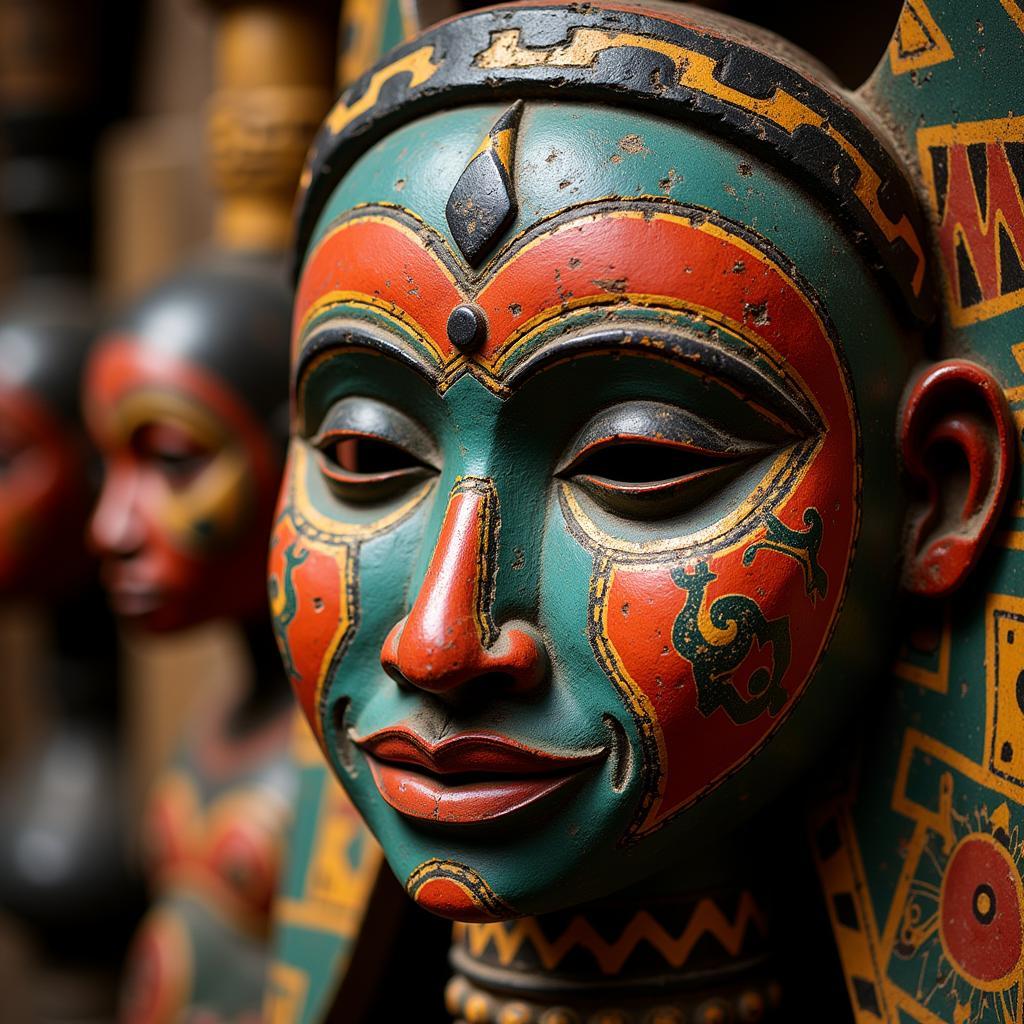African Cichlid Venustus: A Majestic Addition to Your Aquarium
The African Cichlid Venustus, also known as the giraffe cichlid, is a striking and popular choice for aquarium enthusiasts. With its vibrant colors, intriguing behavior, and relatively manageable care requirements, the venustus cichlid adds a touch of the African Great Lakes to any home. This article delves into the fascinating world of the African cichlid venustus, offering insights into their care, behavior, and unique characteristics.
Understanding the African Cichlid Venustus
The venustus cichlid hails from Lake Malawi, one of the African Great Lakes renowned for its incredible biodiversity. These cichlids are known for their striking blue bodies adorned with vertical black bars, resembling the markings of a giraffe, hence their common name. Males typically develop a prominent nuchal hump as they mature, adding to their majestic appearance. These fish are relatively large, reaching up to 10 inches in length, so a spacious tank is essential. They are also quite active and boisterous, making them a captivating presence in any aquarium.
Shortly after this introduction, you will want to research more about African Hapsi. african hapsi
Setting up the Perfect Venustus Habitat
Creating a suitable environment for your African cichlid venustus is crucial for their well-being. A large aquarium, at least 75 gallons, is recommended for a single adult venustus, and even larger tanks are necessary for multiple fish. The tank should mimic their natural habitat with a sandy substrate, plenty of rocks for hiding and territorial establishment, and good water circulation. Maintaining a stable water temperature between 72 and 82°F (22-28°C), with a pH of 7.8-8.6, is also essential for their health.
Feeding and Diet
The African cichlid venustus is a predatory carnivore in nature. In the aquarium, their diet should consist of high-quality cichlid pellets or flakes formulated for carnivorous species. Supplementing their diet with live or frozen foods, such as brine shrimp, bloodworms, and krill, will enhance their color and overall health. Avoid feeding them mammalian meat, as it can cause digestive issues.
Venustus Cichlid Behavior and Tank Mates
Venustus cichlids are known for their aggressive and territorial behavior, especially males. Keeping them with other robust, similarly-sized cichlids from Lake Malawi can work, but careful observation is crucial. Avoid keeping them with peaceful or smaller fish, as they are likely to become prey. Providing ample space, hiding places, and breaking up sightlines within the tank can help reduce aggression. Interesting fact: Did you know some African cichlids can grow surprisingly large? Learn more about african cichlids fish huge.
Breeding African Cichlid Venustus
Breeding venustus cichlids can be a rewarding experience. They are maternal mouthbrooders, meaning the female incubates the eggs and fry in her mouth for several weeks. A separate breeding tank is recommended to minimize stress and ensure the fry’s survival. Once the fry are free-swimming, they can be fed small foods like crushed flakes or baby brine shrimp.
What are the different types of African Cichlids? Find out here: african cichlid fish types.
Conclusion: The Majestic Venustus in Your Home
The African cichlid venustus is a captivating and rewarding addition to any aquarium. With proper care, including a spacious tank, appropriate tank mates, and a balanced diet, these magnificent fish will thrive and bring a piece of the African Great Lakes to your home. Their vibrant colors, intriguing behavior, and relatively straightforward care requirements make them a popular choice for both experienced and novice cichlid keepers. Remember to consider their size and temperament when planning your aquarium setup.
FAQ
- How big do venustus cichlids get? They can grow up to 10 inches.
- What do venustus cichlids eat? They are carnivores and should be fed a diet of high-quality cichlid pellets, flakes, and live or frozen foods.
- Are venustus cichlids aggressive? Yes, they are known for their aggressive and territorial behavior.
- Can I keep venustus cichlids with other fish? Yes, but choose robust, similarly-sized cichlids from Lake Malawi.
- How can I breed venustus cichlids? Provide a suitable environment and they will breed readily, with the female incubating the eggs and fry in her mouth.
- What is the ideal tank size for a venustus cichlid? At least 75 gallons for a single adult, and larger for multiple fish.
- What water parameters are suitable for venustus cichlids? A temperature between 72 and 82°F (22-28°C) and a pH of 7.8-8.6.
Common Scenarios and Questions:
- My Venustus is chasing other fish: This is normal territorial behavior. Ensure you have enough space and hiding places in the tank.
- My Venustus is not eating: Check the water parameters and ensure the food is appropriate.
- My Venustus has lost its color: This could indicate stress or illness. Check water quality and observe for any other symptoms.
Further Exploration:
- Learn more about other African cichlid species.
- Research different aquarium setups for African cichlids.
- Explore the diverse ecosystem of Lake Malawi.
For assistance, contact us 24/7 at Phone: +255768904061, Email: [email protected], or visit us at Mbarali DC Mawindi, Kangaga, Tanzania.



